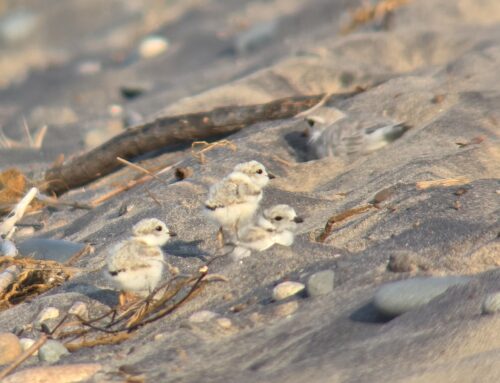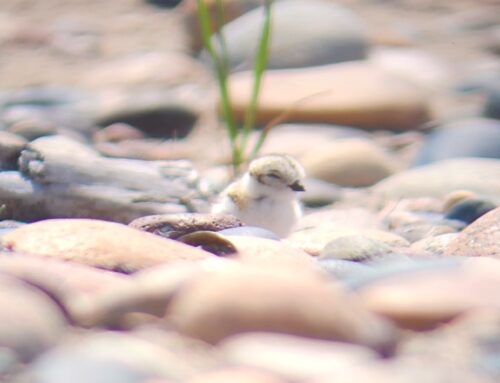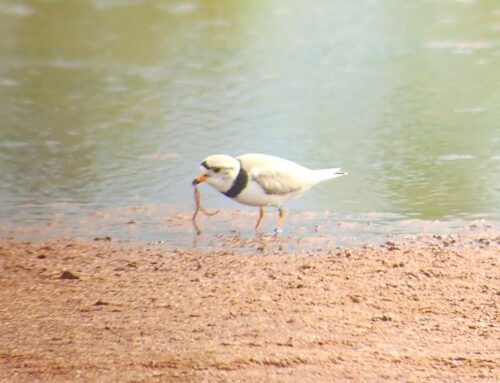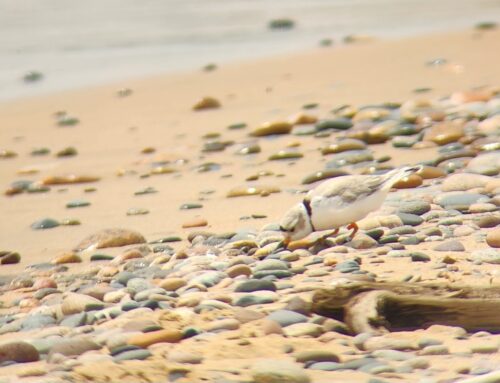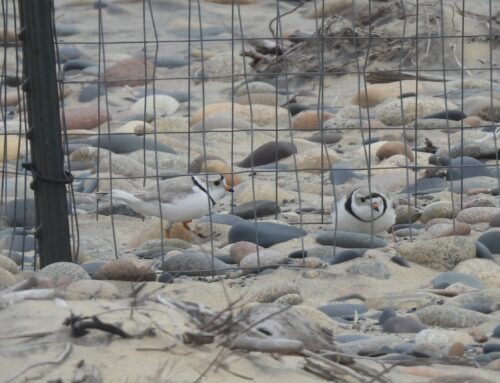Last week, birders throughout the Great Lakes region went out and kept vigil for the wayward birds we hoped might be transported by the fragments of Tropical Storm Cristobal. (The link takes you to a great Gizmodo piece that highlights how unusual a tropical storm on Lake Superior is.) It’s crazy to think about, but these strong systems of tropical origin can (and sometimes do!) carry oceanic species like Magnificent Frigatebirds, Sooty Terns, and Brown Boobies all the way to the Great Lakes.
I’m back up at Whitefish Point for the summer doing Piping Plover monitoring and outreach; of course, I couldn’t pass up the chance to hold my own Lake Superior Cristobal watch. I wanted, badly, a Sooty Tern–a delicate, pelagic tern that nests on oceanic islands like Florida’s Dry Tortugas (and has not yet been recorded in Michigan). So the morning that Cristobal was slated to move through, I bundled up and headed out to the Point.
It’s rare that I meet a Superior storm that I don’t appreciate, and I really enjoyed observing Cristobal’s tatters march across the Lake. However, it does bear mentioning that the system, despite its media hype, just barely registered on my “worst weather at the waterbird count” rankings–I guess my three seasons at the waterbird count have provided ample desensitizing… While I did not get my Sooty Tern (though, amazingly, individuals of this species were found in both Wisconsin and Indiana!), I did find a Franklin’s Gull (only the second I’ve seen of this prairie pothole specialist at WPBO), and a couple beautiful Red Knots in full breeding regalia. Red Knots are a sturdy shorebird that nest in the arctic. They are also a species whose spring migration aligns with the horseshoe crab spawning on mid-Atlantic beaches–the eggs provide a much-needed refuel stop. This year, unfortunately, the crabs and the knots did not arrive at the same time to these beaches, and the birds had to press northward without the critical food source. (Linked is a NYT article about this occurrence.) Red Knots are always scarce in Michigan and we always appreciate happening across them at the Point.
To complete the roundup of interesting bird sightings, I saw a Parasitic Jaeger bully a gull this past Sunday, June 14, and a late Whimbrel was hanging around the point on Saturday, June 13. Stay tuned for a blog post about the WPBO Piping Plovers and how to read color-bands–there is one in the pipeline!
As always, thank you for reading. It’s an honor to be here again this summer.
–Alison Vilag, WPBO Piping Plover monitor (Feature photo: Red Knot at WPBO, Alison Vilag photo.)


